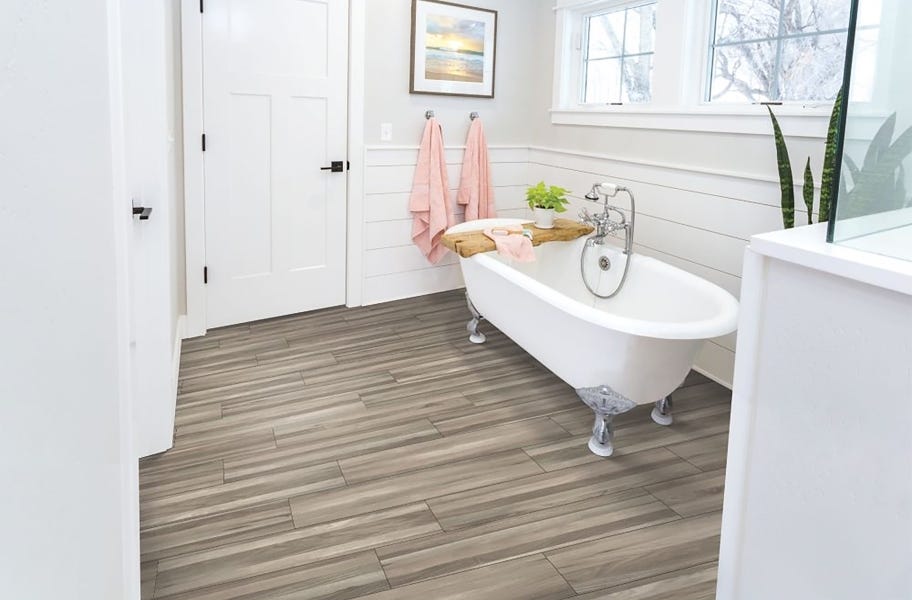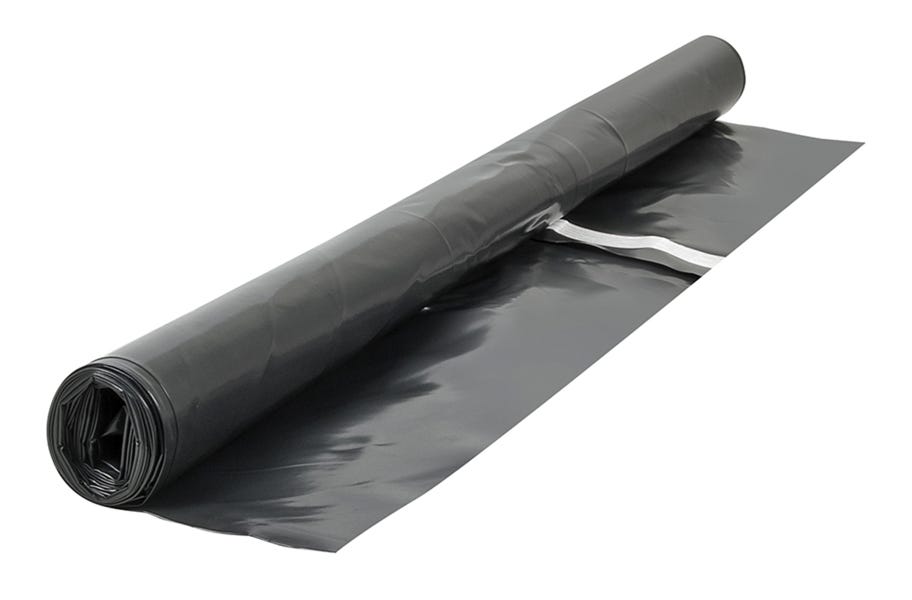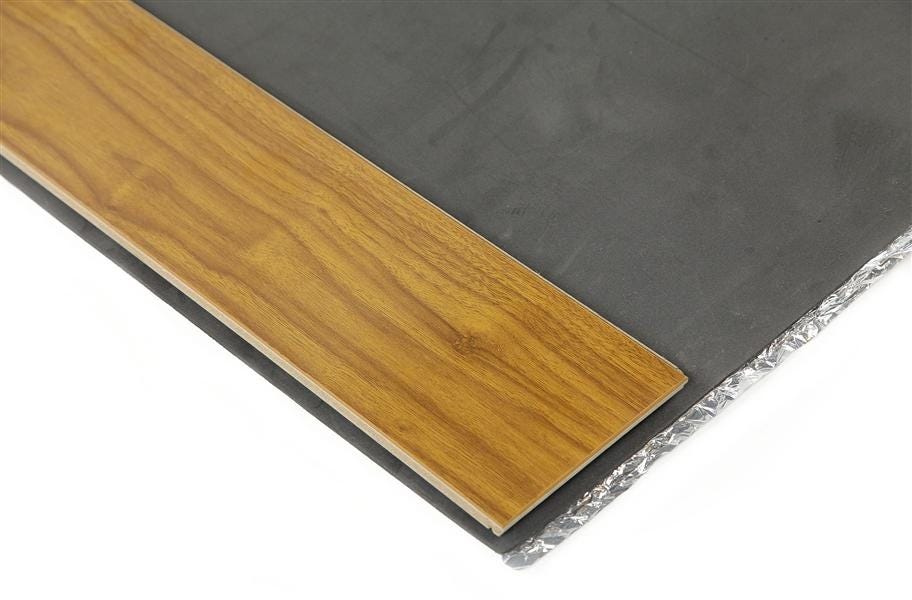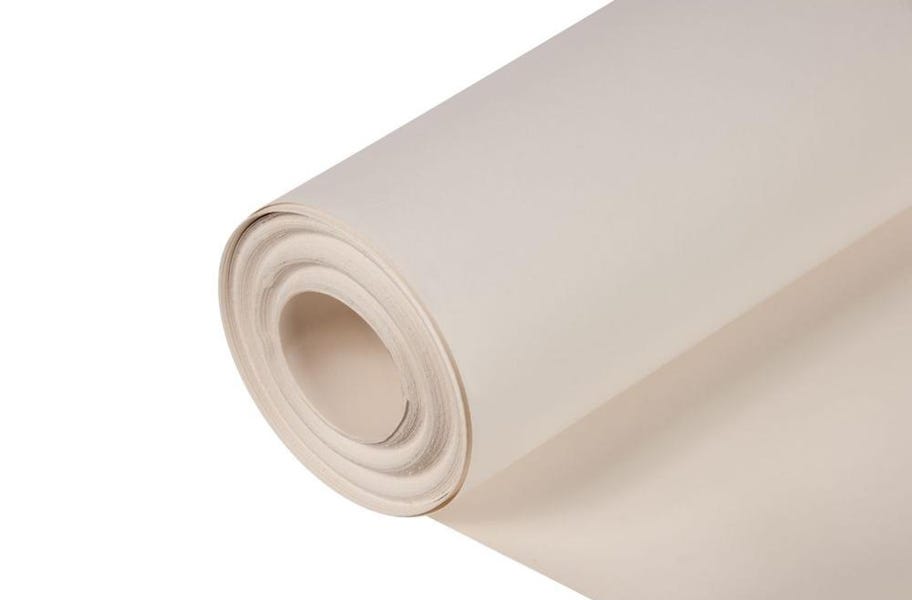
Most people are unsure of what to do with a moisture barrier when dealing with flooring. Is it even needed? If so, when? More importantly, what does a moisture barrier do?
Overall, vapor barriers are misunderstood as a material that is only used for building walls. In reality, it’s used for both walls and floors, but for floors, they’re primarily referred to as moisture barriers.
By learning more about what moisture barriers do, and how to use them, we can answer the main overarching question: When you’re considering installing new flooring, will you need a vapor barrier? That’s what we are here to talk about and answer. Let’s dive in!
What is a Vapor Barrier?
Water vapor can cause serious damage to your home. For instance, if your flooring gets wet, it could cause mold and mildew, and even destroy your floor (source). No one wants that, so vapor barriers are there to help prevent the floor from getting wet.
Also known as a moisture barrier, a floor vapor barrier is typically a sheet of plastic that slows moisture from moving through a wall or subfloor. A moisture barrier is used when installing floors or walls in areas prone to dampness or excess moisture, such as basements, ceilings, or crawl spaces (source).
Flooring moisture barriers are placed beneath the floor’s underlayment. You can buy a barrier separately or get underlayment with a moisture barrier built-in. If any water vapor penetrates through a concrete subfloor, the vapor diffusion retarder slows the movement of the moisture, preventing damage to the floor.
| Related Content >> Underlayment Buying Guide |
Vapor Diffuser Classifications

Water vapor is measured in units called “perms” or permeability. To better understand a material’s ability to slow moisture’s movement, for instance, vapor barriers are categorized into three classes depending on how much water can permeate the material.
- Class I vapor retarders: This class of vapor barriers is impermeable. This means it does not allow fluid to pass through, making Class I the strongest vapor barrier class. Examples of Class I vapor barriers include, glass, sheet metal, plastic sheets, and rubber membranes.
- Class II vapor retarders: Class II refers to materials that are semi-permeable. This means some fluid can flow through. Examples include unfaced expanded or extruded polystyrene, 30-pound asphalt-coated paper, plywood, or bitumen coated kraft paper.
- Class III vapor retarders: This class of vapor barriers is permeable. Meaning water vapor can pass through. Examples of Class III vapor barriers include gypsum board, fiberglass insulation (unfaced), board lumber, concrete block, brick, or 15-pound asphalt coated paper. (source)
When Do You Need a Moisture Barrier?

To determine if you need a moisture barrier for your floor, you need to consider three factors: where you’re installing, the floor grade level, and the subfloor you’re installing over.
Climate
In mild climates, vapor barriers are not as common. However, if the climate around you is drastic, such as snowy winters, a lot of April showers, and humid summers, a vapor diffuser could be a necessity.
Grade Level
On some levels of the home, moisture barriers are more necessary than others. For instance, a basement is below-grade, so it’s more prone to moisture. Therefore, those levels that see more water vapor would need a moisture barrier. If the house does not have a basement, the ground level could be more susceptible to moisture.
Subfloor Material
You’ll typically need a vapor barrier if you’re installing flooring over concrete. Therefore, in high-humidity areas, moisture will move to a relatively low-humidity area, even through concrete. Therefore, because concrete is porous, it’s a good idea to install a vapor barrier over your concrete subfloor before installing your flooring. This way you can stop the vapor drive of water upward to your floors, protecting them from any damage (source).
| Helpful Tip
To test to see if moisture is coming up through concrete, you can tape a sheet of plastic over the concrete and leave it there for 24 hours. If there is condensation on the plastic when you peel it up, you need a moisture barrier. Once you have considered your climate and materials, you can decide if you need a vapor barrier for your floors. |
| Related Content >> Carpet Padding Guide |
How to Choose and Install a Flooring Moisture Barrier
Choosing a Flooring Vapor Barrier
There are different types of vapor barriers available for new flooring installations. Before installing your moisture barrier, it’s important to differentiate between each type, then choose which works best for your flooring. Let’s talk about the different barrier options for flooring installations.
- Vapor barrier rolls that tape together, creating a full floating sheet. These rolls can also come with a self-taping option.
- Underlayment that has a vapor barrier attached.
- Moisture barriers that can be glued down to the subfloor.
- Barriers that can be rolled, or painted on, which can also be used for showers.
Choosing a moisture barrier depends on the flooring that’s being installed. Therefore, when trying to find the right barrier, it’s important to talk to a sales representative or flooring professional, or review the manufacturer’s guidelines for the flooring. This ensures a suitable vapor barrier for your floor.
Installing a Flooring Moisture Barrier
Once you have the right moisture barrier, installation is easy. If the barrier is attached to your underlayment, simply install your underlayment, then put your new flooring on top.
If you choose a barrier that requires adhesive, such as tape or glue, all you need is the chosen vapor barrier adhesive, a utility knife or scissors, and your vapor barrier. The following are the steps for such an installation.
- Lay out your moisture barrier in any area where moisture is a concern.
- Go along one edge of the room and tape your sheet to the subfloor. When connecting two sheets, you should overlap the sheets by six inches and use vapor barrier tape to bond the sheets together for excellent moisture control.
- Move along the room, starting from the same edge until the entire area is covered.
Remember, a vapor retarder should be a continuous sheet without any damages or holes. If there are punctures or tears, be sure to repair them before installation, as this could allow moisture to flow through (source).
Vapor Barrier FAQ
When should I use a moisture barrier on the floor?
Vapor barriers should be used on a floor when the area is prone to moisture. When moisture penetrates your flooring, it can cause mold, mildew, and the potential for water damage. A moisture barrier helps control the water vapor’s movement to help protect your floors. Therefore, if you’re installing floors in an area that sees moisture, even a little, a vapor barrier is needed.
Can you use plastic sheeting as a vapor barrier?
A moisture barrier is a material that reduces moisture from moving through other materials. Therefore, a plastic sheet can be a vapor barrier. In fact, plastic (or polyethylene) sheets are a Class I vapor barrier. Meaning, in terms of excellent moisture control, a plastic sheet is one of the best options.
How thick should a moisture barrier be?
Vapor barrier thicknesses range from 6 mils to 20 mils. 6 mil is the minimum for moisture control, with 20 mils being the most sturdy and puncture-resistant. The ideal thickness of a moisture barrier depends on how prone the area is to dampness. For dry areas, a 6-11 mil is standard. For wet or humid climates and areas, you should be using a 12 mil or higher.
What is the best moisture barrier for laminate flooring?
For any flooring that requires a floating installation method, be laminate or vinyl planks, use a 6 mils (or thicker) plastic sheet as a moisture barrier. You can also use an underlayment with a moisture barrier built-in for water vapor control.
How long does a flooring vapor barrier last?
A vapor barrier underneath flooring will last as long as the floor. After the floor has been installed, the vapor barrier underneath will not get damaged over time since it's not stepped on or exposed to other elements.
Do you need to tape vapor barrier seams?
You need to seal the seams between moisture barriers to prevent water from getting through. To do this, you can use vapor barrier seaming tape. To ensure excellent moisture control, layer the sheets over each other by six inches.
| Related Content >> Rubber Flooring FAQ |
Conclusion
Now that we broke down the ins and outs of vapor barriers, you’re ready to install new flooring in your basement, bathroom, or wherever! You know what to do to make sure you have the moisture in your home under control.
If you’re looking for flooring inspiration, we have the perfect place to start your search.






when checking construction, moisture values were measured above the critical level for microbial growth and normal alkalinity was experienced.
The foundation consists of a concrete slab on the ground without underlying insulation and with a surface layer close to the concrete and a partially raised insulated floor. These structures often suffer damage due to natural moisture migration. The actual ratio was measured at 19% In the exterior wall sill in the warehouse. The moisture content was measured at 10% in the inner wall sill. in the common room.
We recommend an in-depth investigation to assess the cause and extent. It is important to bear in mind that this recommendation for in-depth investigation applies to the entire lower part of the house that has a concrete slab on the ground.
We asked the person who does the renovation work about this problem, and he said that if there is moisture, the only thing to do is to demolish this part of the house.
My question is, is there no other way?
What are the ways to fix this problem?
What is the most affordable way?
With increased moisture building in the house and above the critical level, we agree with the inspector's recommendation. We believe health and safety are of utmost importance. By getting to the route of the problem now, you should not have to endure these expenses again. Should any very minimal moisture come after fully updating the subflooring, there are several ideas for you to try: https://www.huskyair.com/blog/reducing-indoor-humidity/. Thank you for reaching out, and please let us know if you have any other questions.
Thank you for your question.
Yes, plastic would trap moisture underneath. You could also possibly have the concrete itself completely sealed but it'd be best to talk to a concrete professional in your area since different regions of the country may have certain products that would be recommended.
I hope this helps. Please let us know if you have any other questions, and best of luck on your project!
Thank you for reaching out!
Even though the bamboo is glued down, we have to assume it has a vapor barrier installed, so there's no need to install another barrier on top of the bamboo. Plus, you can install the LVP right on top of your bamboo floors without it warping.
I hope this information helps, and wish you the best of luck on your project. Please let us know if you have any other questions.